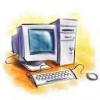Search the Community
Showing results for tags 'debian'.
-
http://http://fsmsh.com/2107 Debian as a desktop system (2007)
-
Surfin as you do, I chanced upon this titbit, https://openlibra.com/en/collection/search/category/ubunchu_spanish_magazine A magna all about Ubuntu. How quaint, but only five episodes --- hmmmm there must be more. A search threw up this very interesting article about Ubuntu in popular culture media. 2004 to 20.04 LTS: Ubuntu in popular culture Interesting but not that much information on ubunchu. Maybe Wikipedia can help, https://en.wikipedia.org/wiki/Ubunchu! Plenty of information but no more episodes to read. Only one of the three links at the bottom of the site was any use, English translations (chapters 9-14) Ah ha this site has episodes from 9 to 14 and a link to the first eight found at the original translation site. https://gitlab.com/ubunchu-translators/ubunchu At this site you can download one .pdf file with episodes 1 to 8 in English and Japanese. I use GV for reading PDF's. As to translating episode 15 and the extras it seems that there is some hope as there is still interest as of 2021 at a ubunchu translation site, https://groups.google.com/g/ubunchu-translators/c/q_uISc4czYo So I can get to read chapters 1 to 14 but only with some fiddling around. Can I find a way to easily do this ? Maybe this site will solve the problem, https://archive.org/details/ubunchu-ch-1-11/page/n1/mode/2up So so close but no banana. Only 11 chapters. Maybe someone will upload the missing three one day. Finally one site to view all chapters You do have to scroll through the chapter which is a bit of a pain on a normal monitor. Luckily for me with one click I can alter my monitor to suit such a task. So there you are folks yet another bit of obscure penguin lore. Happy reading folks. Oh yes if you do decide to read the manga then this tip will be useful.
-
Updates Debian Lennylibgnutls26 2.4.2-6+lenny1 [457kB]Total 457 kBB) Bruno
-
It's that time that happens only every two years or so, Debian release time! We welcome our new stable Bullseye overlord. ------------------------------------------------------------------------ The Debian Project https://www.debian.org/ Debian 11 "bullseye" released press@debian.org August 14th, 2021 https://www.debian.org/News/2021/20210814 ------------------------------------------------------------------------ After 2 years, 1 month, and 9 days of development, the Debian project is proud to present its new stable version 11 (code name "bullseye"), which will be supported for the next 5 years thanks to the combined work of the Debian Security team [1] and the Debian Long Term Support [2] team. 1: https://security-team.debian.org/ 2: https://wiki.debian.org/LTS Debian 11 "bullseye" ships with several desktop applications and environments. Amongst others it now includes the desktop environments: * Gnome 3.38, * KDE Plasma 5.20, * LXDE 11, * LXQt 0.16, * MATE 1.24, * Xfce 4.16. This release contains over 11,294 new packages for a total count of 59,551 packages, along with a significant reduction of over 9,519 packages which were marked as "obsolete" and removed. 42,821 packages were updated and 5,434 packages remained unchanged. "bullseye" becomes our first release to provide a Linux kernel with support for the exFAT filesystem and defaults to using it for mount exFAT filesystems. Consequently it is no longer required to use the filesystem-in-userspace implementation provided via the exfat-fuse package. Tools for creating and checking an exFAT filesystem are provided in the exfatprogs package. Most modern printers are able to use driverless printing and scanning without the need for vendor specific (often non-free) drivers. "bullseye" brings forward a new package, ipp-usb, which uses the vendor neutral IPP-over-USB protocol supported by many modern printers. This allows a USB device to be treated as a network device. The official SANE driverless backend is provided by sane-escl in libsane1, which uses the eSCL protocol. Systemd in "bullseye" activates its persistent journal functionality, by default, with an implicit fallback to volatile storage. This allows users that are not relying on special features to uninstall traditional logging daemons and switch over to using only the systemd journal. The Debian Med team has been taking part in the fight against COVID-19 by packaging software for researching the virus on the sequence level and for fighting the pandemic with the tools used in epidemiology; this work will continue with focus on machine learning tools for both fields. The team's work with Quality Assurance and Continuous integration is critical to the consistent reproducible results required in the sciences. Debian Med Blend has a range of performance critical applications which now benefit from SIMD Everywhere. To install packages maintained by the Debian Med team, install the metapackages named med-*, which are at version 3.6.x. Chinese, Japanese, Korean, and many other languages now have a new Fcitx 5 input method, which is the successor of the popular Fcitx4 in "buster" ; this new version has much better Wayland (default display manager) addon support. Debian 11 "bullseye" includes numerous updated software packages (over 72% of all packages in the previous release), such as: * Apache 2.4.48 * BIND DNS Server 9.16 * Calligra 3.2 * Cryptsetup 2.3 * Emacs 27.1 * GIMP 2.10.22 * GNU Compiler Collection 10.2 * GnuPG 2.2.20 * Inkscape 1.0.2 * LibreOffice 7.0 * Linux kernel 5.10 series * MariaDB 10.5 * OpenSSH 8.4p1 * Perl 5.32 * PHP 7.4 * PostgreSQL 13 * Python 3, 3.9.1 * Rustc 1.48 * Samba 4.13 * Vim 8.2 * more than 59,000 other ready-to-use software packages, built from more than 30,000 source packages. With this broad selection of packages and its traditional wide architecture support, Debian once again stays true to its goal of being "The Universal Operating System". It is suitable for many different use cases: from desktop systems to netbooks; from development servers to cluster systems; and for database, web, and storage servers. At the same time, additional quality assurance efforts like automatic installation and upgrade tests for all packages in Debian's archive ensure that "bullseye" fulfills the high expectations that users have of a stable Debian release. A total of nine architectures are supported: 64-bit PC / Intel EM64T / x86-64 (amd64), 32-bit PC / Intel IA-32 (i386), 64-bit little-endian Motorola/IBM PowerPC (ppc64el), 64-bit IBM S/390 (s390x), for ARM, armel and armhf for older and more recent 32-bit hardware, plus arm64 for the 64-bit "AArch64" architecture, and for MIPS, mipsel (little-endian) architectures for 32-bit hardware and mips64el architecture for 64-bit little-endian hardware. If you simply want to try Debian 11 "bullseye" without installing it, you can use one of the available live images [3] which load and run the complete operating system in a read-only state via your computer's memory. 3: https://www.debian.org/CD/live/ These live images are provided for the amd64 and i386 architectures and are available for DVDs, USB sticks, and netboot setups. The user can choose among different desktop environments to try: GNOME, KDE Plasma, LXDE, LXQt, MATE, and Xfce. Debian Live "bullseye" has a standard live image, so it is also possible to try a base Debian system without any of the graphical user interfaces. Should you enjoy the operating system you have the option of installing from the live image onto your computer's hard disk. The live image includes the Calamares independent installer as well as the standard Debian Installer. More information is available in the release notes [4] and the live install images [5] sections of the Debian website. 4: https://www.debian.org/releases/bullseye/releasenotes 5: https://www.debian.org/CD/live/ To install Debian 11 "bullseye" directly onto your computer's hard disk you can choose from a variety of installation media such as Blu-ray Disc, DVD, CD, USB stick, or via a network connection. Several desktop environments — Cinnamon, GNOME, KDE Plasma Desktop and Applications, LXDE, LXQt, MATE and Xfce — may be installed through those images. In addition, "multi-architecture" CDs are available which support installation from a choice of architectures from a single disc. Or you can always create bootable USB installation media (see the Installation Guide [6] for more details). 6: https://www.debian.org/releases/bullseye/installmanual There has been a lot of development on the Debian Installer, resulting in improved hardware support and other new features. In some cases, a successful installation can still have display issues when rebooting into the installed system; for those cases there are a few workarounds [7] that might help log in anyway. There is also an isenkram-based procedure [7] which lets users detect and fix missing firmware on their systems, in an automated fashion. Of course, one has to weigh the pros and cons of using that tool since it's very likely that it will need to install non-free packages. 7: https://www.debian.org/releases/bullseye/amd64/ch06s04#completing-installed-system In addition to this, the non-free installer images that include firmware packages [8] have been improved so that they can anticipate the need for firmware in the installed system (e.g. firmware for AMD or Nvidia graphics cards, or newer generations of Intel audio hardware). 8: https://cdimage.debian.org/cdimage/unofficial/non-free/cd-including-firmware/ For cloud users, Debian offers direct support for many of the best-known cloud platforms. Official Debian images are easily selected through each image marketplace. Debian also publishes pre-built OpenStack images [9] for the amd64 and arm64 architectures, ready to download and use in local cloud setups. 9: https://cloud.debian.org/images/openstack/current/ Debian can now be installed in 76 languages, with most of them available in both text-based and graphical user interfaces. The installation images may be downloaded right now via bittorrent [10] (the recommended method), jigdo [11], or HTTP [12]; see Debian on CDs [13] for further information. "bullseye" will soon be available on physical DVD, CD-ROM, and Blu-ray Discs from numerous vendors [14] too. 10: https://www.debian.org/CD/torrent-cd/ 11: https://www.debian.org/CD/jigdo-cd/#which 12: https://www.debian.org/CD/http-ftp/ 13: https://www.debian.org/CD/ 14: https://www.debian.org/CD/vendors Upgrades to Debian 11 from the previous release, Debian 10 (code name "buster") are automatically handled by the APT package management tool for most configurations. For bullseye, the security suite is now named bullseye-security and users should adapt their APT source-list files accordingly when upgrading. If your APT configuration also involves pinning or APT::Default-Release, it is likely to require adjustments too. See the Changed security archive layout [15] section of the release notes for more details. 15: https://www.debian.org/releases/bullseye/amd64/release-notes/ch-information#security-archive If you are upgrading remotely, be aware of the section No new SSH connections possible during upgrade [16]. 16: https://www.debian.org/releases/bullseye/amd64/release-notes/ch-information#ssh-not-available As always, Debian systems may be upgraded painlessly, in place, without any forced downtime, but it is strongly recommended to read the release notes [17] as well as the installation guide [18] for possible issues, and for detailed instructions on installing and upgrading. The release notes will be further improved and translated to additional languages in the weeks after the release. 17: https://www.debian.org/releases/bullseye/releasenotes 18: https://www.debian.org/releases/bullseye/installmanual About Debian ------------ Debian is a free operating system, developed by thousands of volunteers from all over the world who collaborate via the Internet. The Debian project's key strengths are its volunteer base, its dedication to the Debian Social Contract and Free Software, and its commitment to provide the best operating system possible. This new release is another important step in that direction. Contact Information ------------------- For further information, please visit the Debian web pages at https://www.debian.org/ or send mail to <press@debian.org>.
-
siduction is proud to announce a new release dubbed "Farewell" in honour of recently departed developer Axel. Currently available with several DEs but the main one is KDE Plasma 5.20.5 . A special build is also available with 5.22 from Norbert Preining's repo. Looks like it has some nice innovations like doas instead of sudo, iwd for wifi, and kio-fuse for mounting remote directories. Release notes: https://siduction.org/2021/07/release-notes-for-siduction-2021-2-0/
-
I need help installing a newer kernel in Debian stretch So I can have better graphics. I am not familiar with the backports So I must be doing something wrong. Here is what I've tried Using the debian method and the method for the backports. I need at least kernel 4.18.0 any help appreciated. Mel I Changed /etc/apt/sources.list to add non-free and backports deb http://deb.debian.org/debian-security/ stretch/updates main contrib non-free deb-src http://deb.debian.org/debian-security/ stretch/updates main contrib non-free deb http://deb.debian.org/debian stretch-updates main contrib non-free deb-src http://deb.debian.org/debian stretch-updates main contrib non-free deb http://ftp.debian.org/debian stretch-backports main Install New Linux Kernel Debian Stretch 9 using the debian way apt-cache search linux-image apt-get install (Whatever linux-image-That you Choose) I get a file not found Update kernel aptitude search linux-image apt-get -t stretch-backports upgrade aptitude search linux-image apt-get -t stretch-backports install linux-image-(Whatever I choose to install). reboot Same here I get a file not found or no such file dpkg --get-selections | grep linux-image
-
Last night I was feeling restless so killed some time by installing Neptune OS on my more beefy computer. Neptune is based on Debian Stretch but has rebuilt KDE Plasma 5.12 to be compatible. Default Stretch has Plasma 5.8 and the improvements by 5.12 are significant. Installation was a piece of cake. Boot from USB key and follow instructions. GRUB was set up correctly on UEFI during installation. Adding Nvidia driver from stretch-backports was simple, system has 4K monitor and GTX970 so works better with it. The only slightly tricky bit was getting sound to work. Pavucontrol showed the correct card and metering but no sound. A visit to Alsamixer was required to raise volumes for my M-Audio Audiophile 2496 card. Neptune has a decent selection of included programs, the usual suspects such as LibreOffice, GIMP, Thunderbird, Okular, Inkscape and VLC. Default browser is Chromium. Not so usual is the inclusion of some dedicated multimedia programs such as Ardour, Audacity and Kdenlive. Amarok is the default music player which has great library functions and looks nice but has an annoying glitch with ReplayGain which I use for all music. The ReplayGain setting kicks in a second or so after the song starts playing so it changes level. For this reason I'll be installing my old favourite DeadBeef as it handles ReplayGain better although it has less features. Overall Neptune OS is very well-behaved and functional, a great derivative of Debian Stretch featuring a nice more modern Plasma implementation. I could easily use it as a daily driver but siduction has always treated me well - 11 years and counting now! I am seriously considering switching to Debian Buster when it's released in about 6 months although maybe even before that as the freeze has just started. Buster will have Plasma 5.14 which is just plain excellent. As much as I love siduction, it does take a lot of work keeping it updated. Neptune OS, a solid 8.5/10 from me! https://neptuneos.com/en/start-page.html
-
Debian has just released a special point release specifically to address a vulnerability in apt. More details: https://forums.scotsnewsletter.com/index.php?showtopic=22937&st=1500#entry458542 https://forums.scotsnewsletter.com/index.php?showtopic=22937&st=1500#entry458531
-
MX-18 Continuum Now Available Submitted by dolphin_oracle on Thu, 12/20/2018 - 05:20 MX-18 Continuum Official Release December 20, 2018 --direct download: https://sourceforge.net/projects/mx-lin ... inal/MX18/ mirror sites (these may take some time to populate) https://mxlinux.org/wiki/system/iso-download-mirrors torrents: 32 bit Linuxtracker 64 bit Linuxtracker We are pleased to offer MX-18 Continuum.
-
https://www.zdnet.com/article/debian-linux-founder-ian-murdock-dies-at-42-cause-unknown/ There seems to be a mystery surrounding his death. Whatever the cause a sad loss.
-
August 16 1993, Ian Murdock announces Debian on comp.os.linux.development. What a long strange trip it's been. Well, probably only 10 years for me. https://bits.debian.org/2018/08/debian-is-25.html
-
http://www.zdnet.com/article/diy-linux-laptop-build-your-own-for-240-with-fully-open-source-olimex-teres-i/ At the main site, https://www.olimex.com/Products/DIY-Laptop/ Now that is what I think is a great idea. You can configure the pc to suit yourself. You can replace every bit if they fail. You can upgrade parts of the pc to suit your changing needs. It will be interesting to see what different parts they will offer when they get underway and how much they will cost. The company has links to CERN. https://home.cern/about/updates/2015/02/kicad-software-gets-cern-treatment
- 14 replies
-
- laptop
- self build
- (and 4 more)
-
Is anyone using auto upgrades or updates with Debian? I would like my Debian 9 stable to automatically to download and install security updates or at least notify me that update are available like mint does. If you are doing this, What software (Cron, Apt, Auto-Upgrade, are you using? I like to automate things as much as possible which was easy to do in Mint. Tia Mel
-
My current daily OS has just released their latest version, MX-16. Go to https://mxlinux.org/products and make sure to watch the video to learn of all the marvellous features including some new and innovative MX tools. They also claim it's the best Live USB distro available now, which I can't dispute.
-
LibreElec is the new fork of OpenELEC, the popular media centre distro Based on Debian stable. Read an amusing post about the split here - Let’s rock this gig!
-

Security support for Wheezy handed over to the LTS team
sunrat posted a topic in Bruno's All Things Linux
I'll post this in Debian updates but here too as it may have wider interest. Gotta love a stable distro with 5 years support! -
Updated Debian 7: 7.10 released https://www.debian.org/News/2016/2016040202 Updated Debian 8: 8.4 released https://www.debian.org/News/2016/20160402
-
It's been a long time in the making and now finally released. Based on Debian Testing with Xfce and oodles of great programs for producing audio and video including the excellent KX Studio repositories and core apps such as Cadence and Catia. They have also produced a comprehensive 84 page manual. I'll be trying it very soon. http://www.bandshed.net/2016/03/23/avl2016/
-
GCC5 is the recently released new version of the Linux compiler. A vast number of packages need to be rebuilt to be compatible. This must be the biggest transition I have seen in my time of using Linux. Debian Sid and siduction users are having to hold off on upgrades presently, and probably for months. How are other rolling-release distros handling this? [ACHTUNG! URGENT!] GCC 5 TRANSITION, DO NOT DIST-UPGRADE or keep the pieces https://release.debian.org/transitions/html/libstdc++6.html
- 4 replies
-
- gcc5
- libstdc++6
-
(and 2 more)
Tagged with:
-
http://news.siductio...ction-2014-1-3/ I'm looking forward to trying the new LXQt version, and maybe try btrfs. Homerun, newly included in KDE, looks interesting too. My main siduction install will not be replaced as it still works well. Rolling release rocks!
-
Rebuilding tech in Afghanistan with open source They use this software, https://www.univention.com/ Which to a layman like me seems pretty neat and decently priced. As I have never used it I can not say how it performs personally. I like this explanation they give about their interaction with Debian. ZiiK one of the organisations helping out the Afgans in a big way are German and have been helping and promoting open source to underdeveloped countries since 2000.
- 1 reply
-
- 2
-

-
- afganistan
- debian
-
(and 4 more)
Tagged with:
-
OK, as you all know, I run pure Debian Wheezy. I got sick and tired of having the audio be flaky so I did the following to get rid of Pulse Audio: in a true TTY command line as root: apt-get update apt-get remove pulse audio apt-get alsa base apt-get autoremove reboot apt-get upgrade logged out of root and also in command line: alsamixer and set my settings. Lots more available control now on the Mixer in the system tray area! Yea!!!! And no more stupid Pulse Audio tricks!!
-
I just installed the latest Debian Mint amd 64 version which is rolling distribution. I have not had to much luck in the past with rolling disto's. They seem to break to easy when updating or upgrading. I have had problems in the past with Linux Mint DE I have to say this one went pretty smooth although on first boot I got a blank screen after hard drive install. Thanks to Sunrat I knew what to do. I did a CTRL + ALT + F1 Logged in as user did a SU and then a apt-get update then apt-get install "firmware-linux-nonfree" I then did a ALT + F7 and startx logged out as su rebooted and logged in as user. Here I am. Everything appears to be working just fine. If this distro breaks then I will probably go back to mint standard version with cinnamon. I will keep this one backed up just in case there are problems. Mel
-
Are there any non-linux kernels they currently support and if so, what does this mean for them? systemd is specifically for use with many features of the linux kernel and the big developers have no interest in trying to make it a universal tool. The project page lists a huge range of hardware and projects that Debian runs on. The one that jumps out at me from the list is kFreeBSD. Anyone know if it runs on a linux kernel?
-
I installed Debian 7.3 to night, the gnome version. I was pleasantly surprised at how it has improved from earlier versions. it was fast and the install went without a hitch. it did go into fallback mode when I booted up after the install. Thanks to sunrat I knew what to do and solved the problem with I like it but like siduction better. I will use both. Mel







